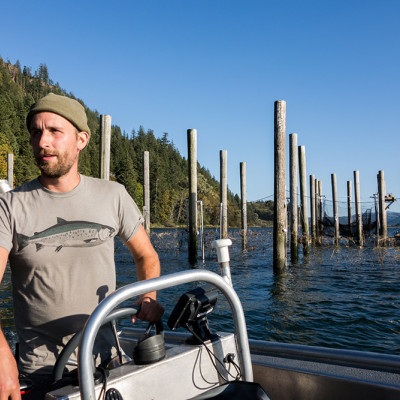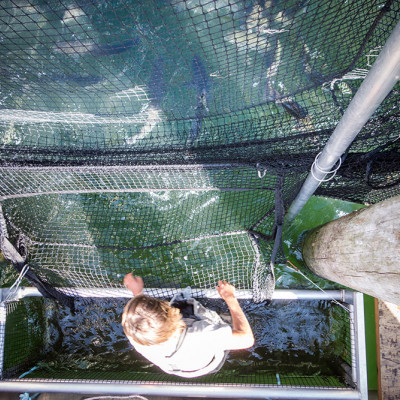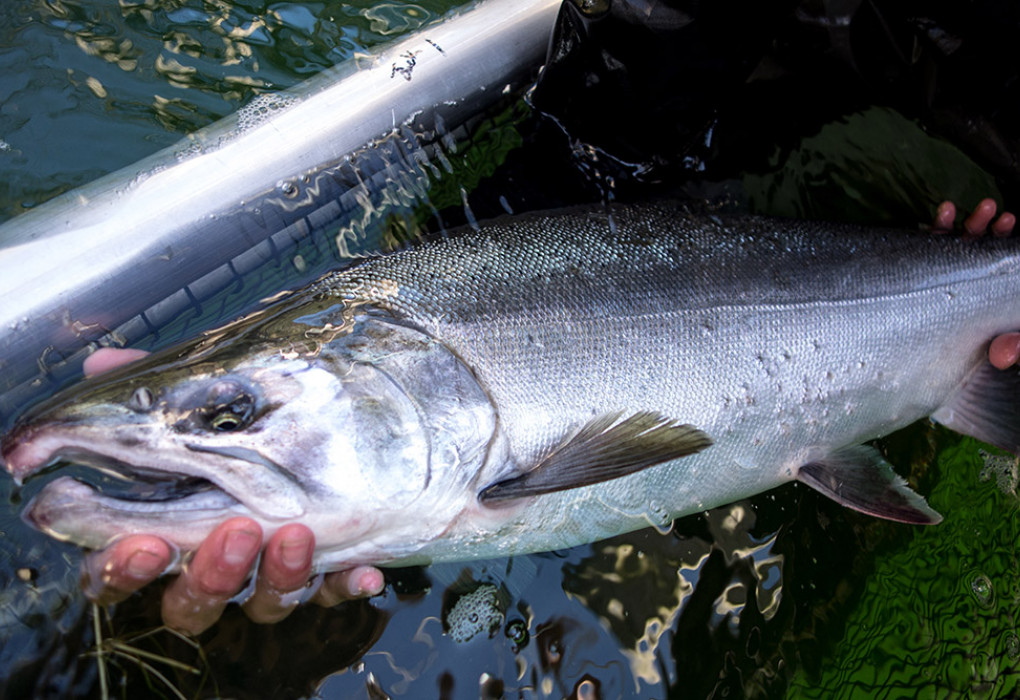The Fixed Gear Fix
Can Pound Nets Save Wild Fish and Commercial Fisheries on the Columbia?
A bleak future for the wild salmon and steelhead of the Columbia River is also a bleak future for the tribal and commercial fishermen that work there. Wild salmon runs that historically numbered between 10 and 16 million fish are now on the brink of extinction. There is no silver bullet that guarantees their future. But part of the solution may be an ancient, fixed-gear fishing method called a pound net.
On a bright fall day last September, I joined a crew of biologists, conservationists, and ex-gillnet fishermen to fish a pound net prototype built by the Wild Fish Conservancy. In one afternoon on the lower Columbia River near Cathlamet, WA, we caught and released more than 40 fish. Our catch included coho, fall Chinook, wild B-run steelhead and endangered lower-Columbia chum. Over the course of one month, the pound net captured 2,144 fish.
The first of its kind in over 80 years, WFC’s pound net is little more than soft netting strung between vertical Douglas fir pilings embedded in the river bottom. The structure funnels fish into a small area where they are netted, captured, and sorted by the crew.
Fixed-gear fishing methods like pound nets aren’t a new idea. Simple, effective, and efficient, they were once favored by many Columbia River tribes. At the turn of the 20th century, Columbia River canneries incorporated their principles into the development of the fish wheel. Left unregulated, fish wheels were appallingly effective and played a leading role in the demise of salmon runs throughout the basin.
In spite of their history, pound nets may be the way forward. Properly regulated, pound nets have a brilliant advantage over other gear: they capture fish alive. Hatchery fish can be harvested, while imperiled wild species can be separated from the catch and returned to the river unharmed. In 2016, the survival rate of fish released from WFC’s pound net was 99.6 percent.
The gillnets now being used on the river indiscriminately kill hatchery and wild salmon alike. It’s nearly impossible to monitor the number of wild fish lost this way. This is bad for fish and fisherman alike. Because many Columbia River salmon and steelhead are protected under the Endangered Species Act, commercial fisheries constantly risk closure during low return years and have little to no legal or practical control over it.
Counterintuitively, a closed commercial fishery is not a boon to wild fish in the Columbia River. According to biologist Jim Lichatowitch, hatchery fish comprise 95 percent of coho, up to 80 percent of spring Chinook, 50 percent of fall Chinook, and 70 percent of steelhead returning to the Columbia. When a fishery is closed, both wild and hatchery fish escape indiscriminately. The high percentages of hatchery fish, which should have been harvested downriver, are reflected on Columbia River spawning grounds, further eroding the viability of wild stocks.
Commercial and subsistence fisheries continue to hamper the recovery of wild, native fish. But the problem is the gear, not the people who use it. We think our friends at Wild Fish Conservancy have found part of the solution. The Native Fish Society is proud to partner with them in turning the pound net prototype into a commercially viable alternative. By adopting selective gear, working fishermen would be more effective, on the river longer and, ultimately, working with conservationists to recover the wild, native fish of the Columbia River.



